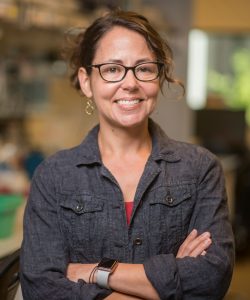Can (and should?) biotechnology reverse extinction?
Could extinct species, like mammoths and passenger pigeons, be brought back to life? Is it possible to clone extinct species using the same or similar technologies that created Dolly the sheep in the 1990s? What are the chances that the science fiction of “Jurassic Park” will someday become science fact?
On November 5 at 7:00pm, Beth Shapiro, ancient DNA scientist and author of How to Clone a Mammoth, will discuss the real science behind the emerging idea known as “de-extinction.” From deciding which species should be restored, to sequencing and editing their genomes, to anticipating how revived populations might be overseen in the wild, she will walk through the process of resurrecting extinct species, considering the technical, ethical and ecological challenges of de-extinction as well as its potential benefits.
While she argues that it may never be possible to bring back an identical copy of a species that has gone extinct, de-extinction technology is likely to provide a new solutions to revitalize and stabilize contemporary ecosystems, with benefits to the preservation of existing biodiversity.

Beth Shapiro is an evolutionary biologist who specializes in the genetics of ice age animals and plants. As Professor of Ecology and Evolutionary Biology at UC Santa Cruz and HHMI Investigator, Beth uses DNA recovered from bones and other remains to study how species evolved through time and how human activities have affected and continue to affect this dynamic process.
Her work focuses on organisms ranging from influenza to mammoths, asking questions about domestication, admixture, speciation, and pathogen evolution. Her current work develops techniques to recover increasingly trace amounts of DNA such as from environmental and forensic samples.
A 2009 MacArthur Fellow, Beth is also an award-winning popular science author and communicator who uses her research as a platform to explore the potential of genomic technologies for conservation and medicine.
This is a FREE event and it’s part of the Biodiversity Lecture Series, organized jointly by the Biodiversity Research Centre and the Beaty Biodiversity Museum. Eventbrite RSVP required.
The event will be held in the Jack Poole Hall at the Robert H. Lee Alumni Centre. Please click here for the address.
Parking: there is limited metered street parking available along University Blvd and Wesbrook Mall. We suggest using one of the following parkades:
- Health Science Parkade
2250 Health Sciences Mall V6T 1Z3,
Directions - North Parkade
6115 Student Union Boulevard V6T 1Z1
Directions
View the university parkade and parking lot map.
